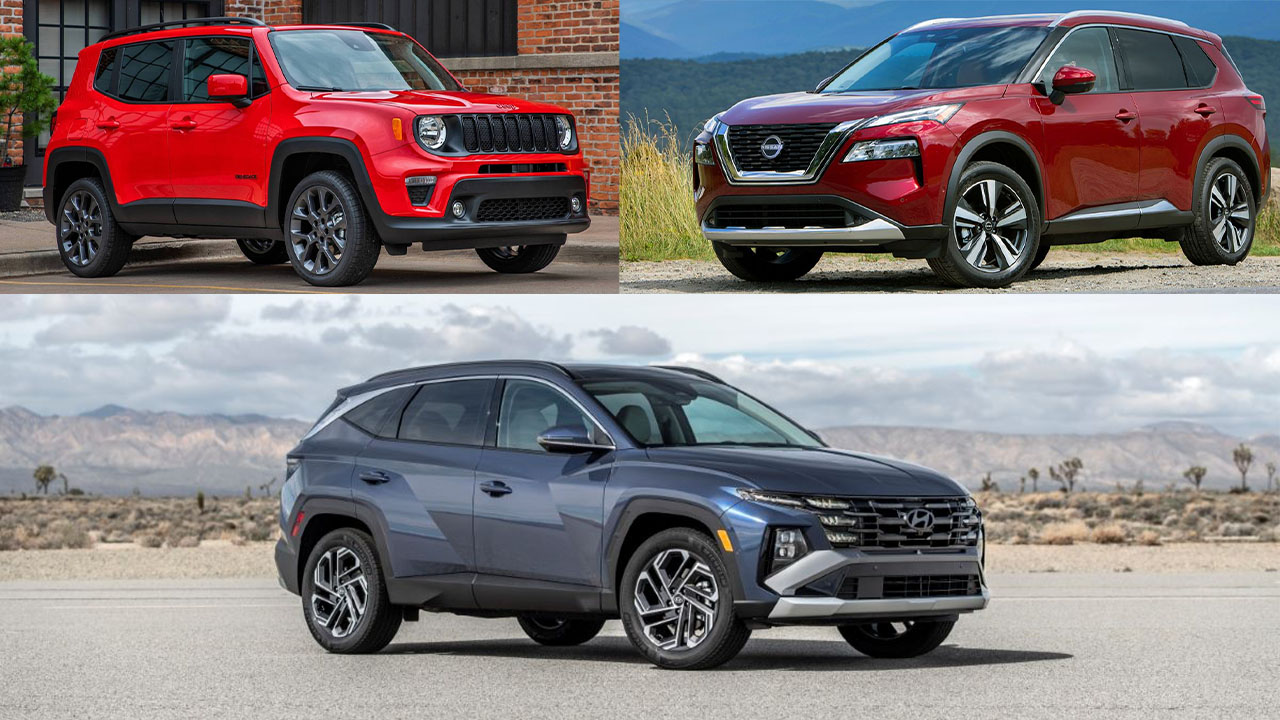Only a small fraction of the world’s consumers can afford to ignore the idea of “value,” but for the vast majority, getting a good deal especially on high-cost items like cars is absolutely crucial.
Not long ago, most car buyers would spend time going from one dealership to another, looking for the best value sedan. However, those days are largely behind us. Today, the automotive industry is all about one key term: “crossover.”
Crossovers deliver a winning combination of practicality, easy-to-drive car-like handling, and a design that appeals to people across generations.
Luckily, car manufacturers have caught on to this growing demand and are now producing better crossovers than ever before.
Crossovers That Deliver Value
With so many new models hitting the market, you’ll find plenty of affordable options and even more expensive ones but only a select few manage to balance strong features with a budget-friendly price.
To help narrow down the choices, we’ve put together a list of the 5 best value crossovers.
1. Mazda CX-3
As the crossover trend continues to grow, subcompact models have gained popularity thanks to their stylish design and affordability.
Mazda’s entry in this segment ranks among our top choices due to its attractive appearance, engaging driving dynamics, fuel-efficient engine, and an impressive array of features.
Every CX-3 trim is powered by a 2.0-liter 4-cylinder engine that produces 146 horsepower and 146 lb-ft of torque. Weighing in at just 2,900 pounds, the CX-3 is eager to take on winding roads and has no trouble reaching highway speeds when needed.
Upper trim levels feature large infotainment screens, advanced safety systems, and upscale materials, but even the base model CX-3 includes a solid list of standard amenities. Pricing begins at $19,960.
If you’re in the market for a compact family car that offers great visibility, effortless driving, and engaging handling on winding roads, the Mazda CX-3 fits the bill.
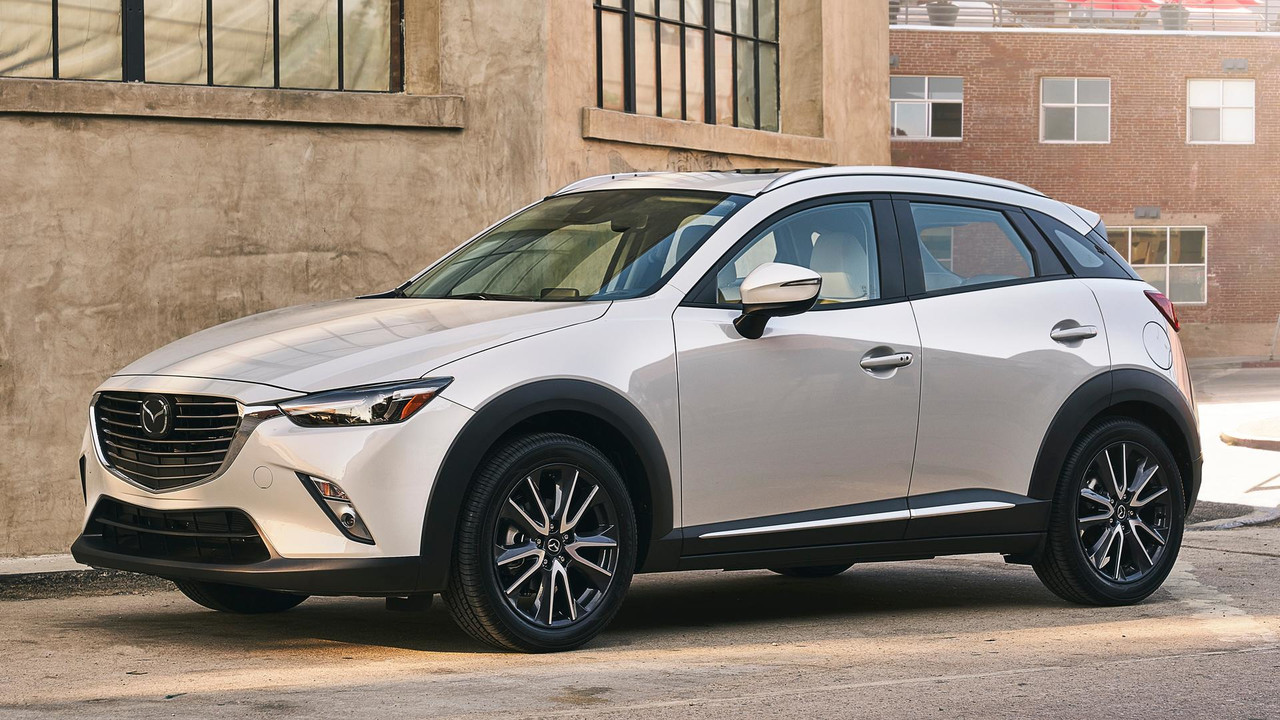
Built on the same platform as the Mazda 2, it features a raised ride height and a slightly more spacious cabin, positioning it as a competitor to models like the Citroen C3 Aircross, Renault Captur, and Nissan Juke.
That said, the CX-3’s exterior doesn’t quite turn heads in the same way the eye-catching Juke or the highly customizable C3 Aircross do.
While its broad front grille and slim headlights lend it a fairly aggressive look and the sharp creases in the doors give it a sportier profile compared to the Citroen’s more rounded design, the CX-3 lacks the bold visual flair that often helps small SUVs stand out during the school run.
The same understated approach continues inside the cabin. The Mazda CX-3 features a clean, well-organized interior that, while not as visually stimulating as the Citroen’s, is intuitive and easy to operate.
The standard 7-inch touchscreen is simple to use, and design elements like circular air vents and a large central rev counter give it a mild sports car vibe—albeit one perched on higher suspension.
Despite that sporty impression, the CX-3 is still a practical small SUV with four doors and a rear bench. However, rear-seat space isn’t as generous as what you’ll find in the C3 Aircross, particularly for adult passengers.
The boot, too, falls slightly short of the Citroen’s in terms of capacity, but it remains sufficient for fitting a few suitcases, a large stroller, and some soft luggage.
Also Read: Top 10 Electric Cars for 2025 That You Should Look Out For
2. Jeep Renegade
FCA (Fiat Chrysler Automobiles) manages to secure two positions on our list of the 5 best value crossovers using a single shared platform.
The Jeep Renegade has served as an entry point to the Jeep brand for many buyers, offering a glimpse of the rugged character found in its larger siblings, the Cherokee and Grand Cherokee, but at a significantly lower price.
The Jeep Renegade Sport is equipped with a 1.4-liter turbocharged 4-cylinder engine that generates 160 horsepower and is mated to either a 6-speed manual or automatic transmission.
Its standard features include 4-wheel anti-lock brakes (ABS), side seat-mounted airbags, curtain airbags for both the first and second rows, a driver knee airbag, an airbag occupancy sensor, 16″ styled steel wheels, ABS and driveline traction control, electronic stability control, power windows, and power door locks. The Renegade is priced at $17,995.
The Renegade serves as the gateway to the Jeep Wave community, sitting at the base of Jeep’s SUV hierarchy below the Compass, Cherokee, Grand Cherokee, and Wagoneer.
Originally launched for the 2015 model year, the Renegade has remained largely unchanged since then, aside from some minor updates to its infotainment system and powertrain.
It competes directly with other small SUVs that aim to blend urban versatility with off-road capability, such as the Subaru Crosstrek and Ford Bronco Sport.
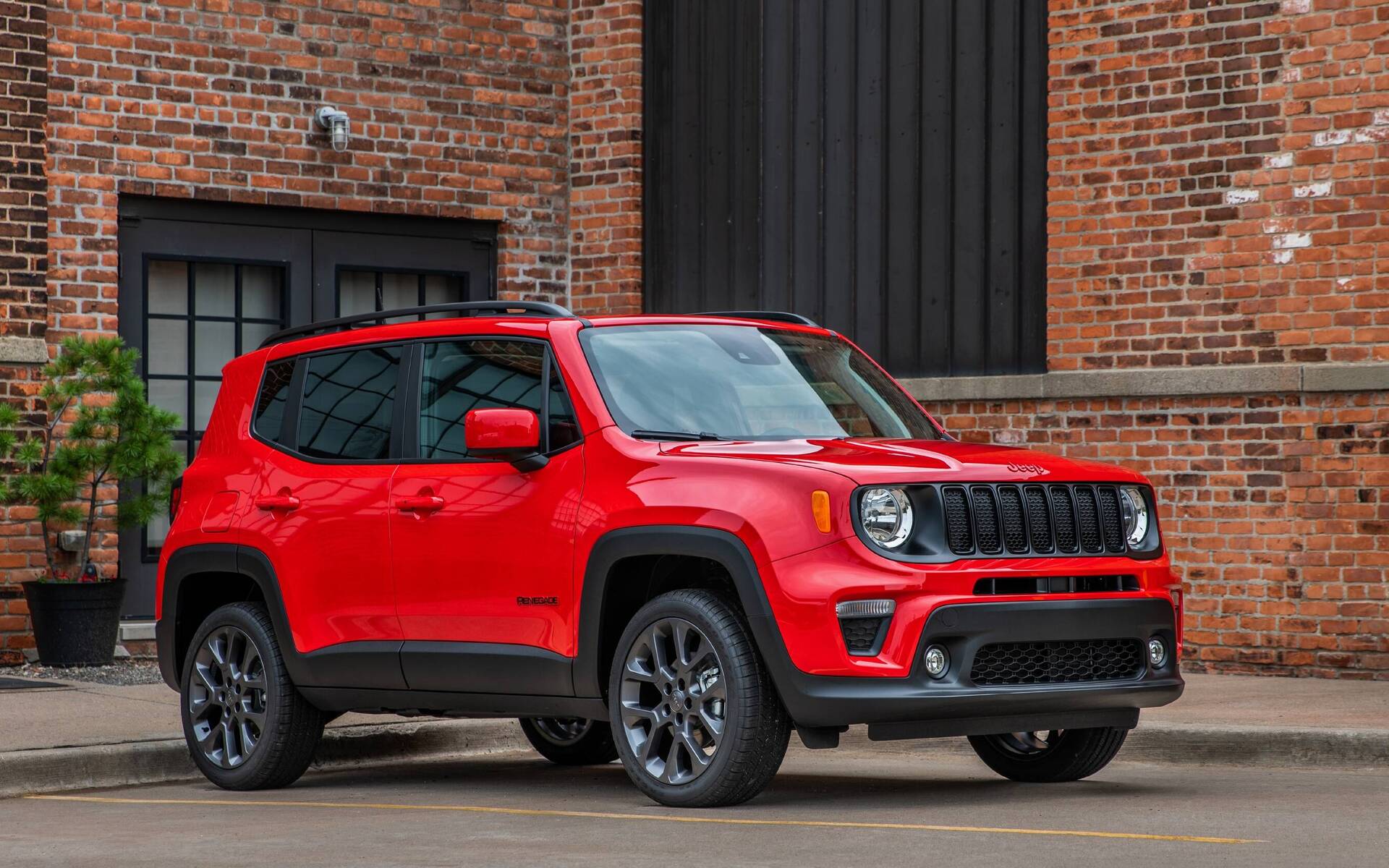
The entry-level Renegade Sport has been dropped from the lineup, simplifying the available trims to the Latitude, Limited, and Trailhawk. For 2024, adaptive cruise control is now standard on the Renegade Limited. A new exterior color, Detonator Yellow, has also been added to the palette.
The Trailhawk model receives a Premium Lighting package that includes LED exterior lights, while the Trailhawk Elite package upgrades the cabin with leather upholstery, an eight-way power-adjustable driver’s seat, heated front seats, a heated steering wheel, and a windshield wiper deicer.
The Limited trim now offers an Elite package with LED lighting, automatic high beams, park assist, and a wiper deicer. Meanwhile, the Limited High Altitude package brings 19-inch painted aluminum wheels, gloss black badging, and gray grille accents.
The Latitude Premium package enhances comfort and utility with an auto-dimming rearview mirror, heated front seats, heated steering wheel, roof rails, fog lamps, and an eight-way power driver’s seat.
In the highly competitive subcompact SUV market, the Renegade distinguishes itself with solid off-road chops wrapped in a distinctive, compact design.
The Trailhawk trim stands out in particular, offering features like a simulated low-range gearbox, underbody skid plates, and terrain-specific drive modes that give it surprisingly capable trail performance. Additionally, its large and user-friendly touchscreen infotainment system is a highlight.
However, the Renegade’s appeal doesn’t extend much beyond its off-road focus. In our experience with the Renegade Limited, Jeep’s abundance of hidden Easter eggs and nods to its heritage seemed more like distractions than meaningful enhancements.
The interior feels cramped, the performance underwhelms, and the transmission often behaves awkwardly.
Handling is loose and lacks the refinement found in many of its rivals. Given the wealth of strong alternatives in the subcompact SUV segment, we suggest that most shoppers consider other options.
3. Honda HR-V
As the smaller sibling to Honda’s well-regarded CR-V, the HR-V subcompact offers the brand’s renowned reliability, sleek design, and solid craftsmanship for budget-conscious buyers.
Providing greater versatility than the Honda Fit for only a modest price increase, the HR-V has introduced many new customers to the Honda lineup.
The 2016 Honda HR-V LX is powered by a 1.8-liter 4-cylinder engine that delivers 141 horsepower. Buyers have the option of a 6-speed manual or a 6-speed automatic transmission.
Standard equipment includes 4-wheel anti-lock brakes (ABS), SmartVent side seat-mounted airbags, curtain airbags for the first and second rows, an airbag occupancy sensor, air conditioning, 17″ aluminum wheels, cruise control, ABS, and VSA electronic stability control.
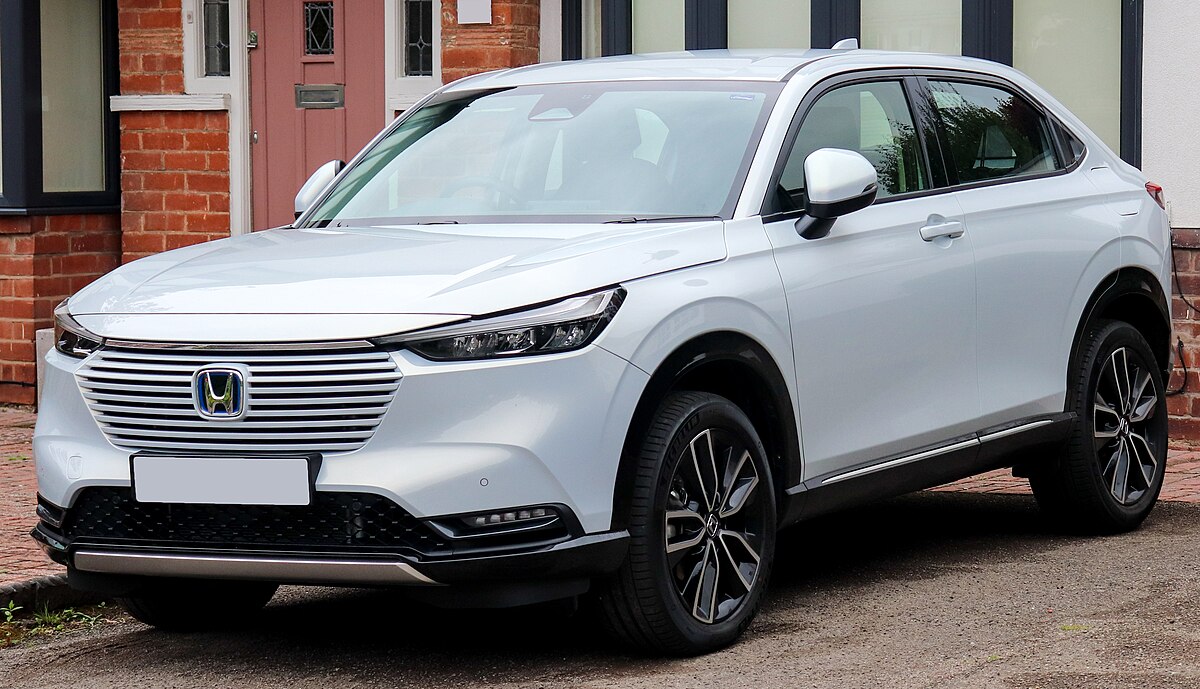
The starting price for the Honda HR-V is $19,215. You’d be forgiven for not realizing that the Honda HR-V received a very subtle update at the end of last year.
The changes include a newly squared-off front grille replacing the previous rounded design, a revised front bumper, sleeker headlights, and some sculpting added to the body—particularly along the sides.
Honda also introduced a new top-tier trim, the Advance Style Plus, which brings with it a panoramic sunroof and eye-catching alloy wheels.
And that’s essentially it. While many other manufacturers are overhauling their lineups or introducing significant updates, Honda has opted to give the HR-V little more than a light refresh—more like a trim than a transformation.
However, to Honda’s credit, that’s arguably all the HR-V really needed. When the third-generation model debuted in 2021, it marked a clear departure from the brand’s previous, more forgettable styling. The somewhat anonymous-looking crossover was replaced by a surprisingly sharp and modern design.
More importantly, it became a hybrid-only model, as indicated by the ‘e:HEV’ badging. The HR-V behaves like a fully electric vehicle at city speeds, switches to engine-only power on the motorway to maximize efficiency, and smartly blends both systems during mixed driving conditions.
But Honda isn’t stopping at stylish design and hybrid efficiency. With the latest HR-V, the brand is also aiming to set new standards in packaging and interior comfort, all while delivering a driving experience that has been “engineered for the joy of driving.”
Also Read: 12 Vehicles With the Best DIY Repairability
4. Hyundai Tucson
During a time when sedans still held strong appeal, Hyundai was working hard to shed its reputation for low build quality and questionable reliability.
Today, the landscape has changed, and Hyundai’s new lineup represents some of the best values in the market.
The redesigned Tucson crossover stands out not only for its attractive design but also for offering a spacious interior, energetic engine performance, smooth ride, solid fuel efficiency, and a wealth of standard features.
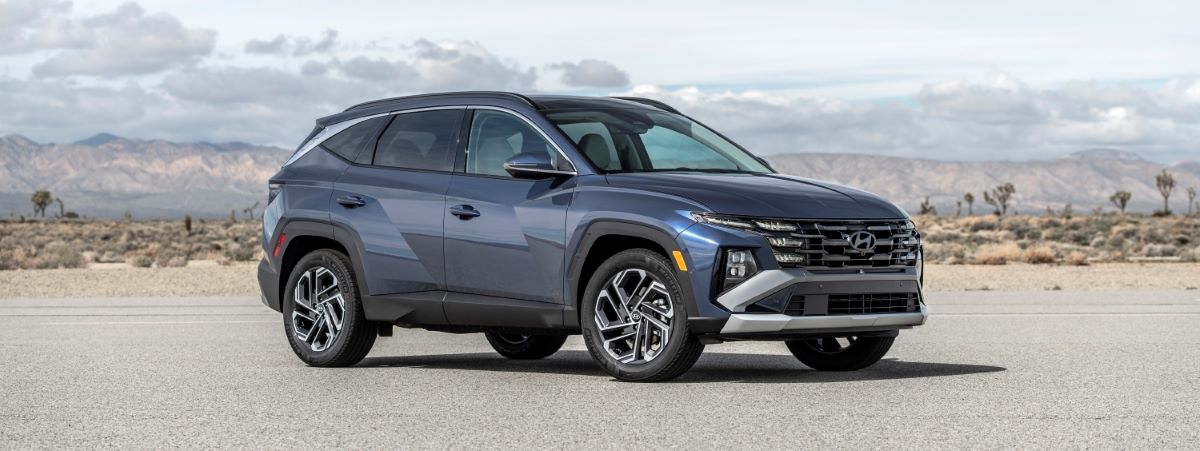
The entry-level Tucson SE comes with a 2.0-liter 4-cylinder engine that produces 164 horsepower, paired with a 6-speed automatic transmission.
Alongside its 5-star safety rating, the Tucson includes 4-wheel anti-lock brakes (ABS), side seat-mounted airbags, curtain airbags for both the first and second rows, an airbag occupancy sensor, air conditioning, 17″ aluminum wheels, cruise control, ABS, and electronic stability control.
The starting price for the Hyundai Tucson is $22,700. If the name “Hyundai Tucson” makes you think of Tucson, Arizona—with its rugged landscapes and Old West gunslingers—that’s actually quite fitting. The Tucson finds itself in a high-stakes showdown with a range of sharp-shooting family SUVs in an extremely competitive class.
To hold its own, Hyundai offers Tucson buyers a broad selection of petrol engines, including three types of hybrids, although the diesel option has now been dropped.
The model has also been recently refreshed with updates to the dashboard for better usability, revised suspension for improved comfort, and a new grille design to sharpen its exterior appeal.
The Hyundai Tucson makes a strong case for itself as a family SUV. It combines a roomy, user-friendly interior with a generous boot and a wide range of engine options.
While some drivers may prefer the more composed handling of the Kia Sportage, the Tucson’s slightly softer ride setup is well suited to daily driving comfort. For private owners, the entry-level petrol engine offers the best value, while the plug-in hybrid is a savvy option for company car drivers.
On the downside, some rivals offer sharper handling, the Tucson is a bit more expensive than direct competitors, and it lacks sliding rear seats which limit its flexibility slightly.
In terms of performance, the Tucson begins with a 159bhp 1.6 T 160 petrol engine paired with a manual gearbox, capable of 0–62mph in 9.9 seconds—comparable to the Nissan Qashqai DIG-T 158.
An upgrade to a seven-speed automatic introduces 48V mild-hybrid technology, providing slightly better performance and offering a choice of front- or all-wheel drive.
The full hybrid model, the 212bhp 1.6 T 215 Hybrid, has enough electric power for short city drives, and when the petrol engine and electric motor work together, it’s quick enough for easy overtaking. In tests, it reached 0–60mph in 6.8 seconds, outperforming the Kia Sportage Hybrid’s 7.1 seconds.
At the top of the range, the 1.6 T-GDI Plug-in Hybrid (PHEV) offers 249bhp and up to 43 miles of electric-only driving, making it one of the better options among PHEV family SUVs. It’s smooth and responsive in EV mode, though the six-speed automatic transmission can hesitate when a quick burst of power is needed.
Ride comfort is one of the Tucson’s strong suits. Its suspension has been reworked as part of the 2024 mid-life update, improving how it handles potholes and bumps, especially at lower speeds.
However, on particularly rough roads, it can feel slightly floaty and take a bit longer to settle than a Kia Sportage. While not as refined as a Skoda Karoq or Volvo XC40, the Tucson is certainly more comfortable than a Ford Kuga.
Choosing the entry-level Advance trim, which comes with smaller 17-inch wheels, helps maximise comfort further by smoothing out the ride even more. Overall, the Tucson offers a well-rounded package that deserves serious consideration in the crowded family SUV market.
5. Buick Encore
In the luxury tier of the subcompact crossover market, several automakers compete, but the Buick Encore stands out as the best value in the segment. Notable features include optional all-wheel drive, a leather-trimmed interior, and an attractive overall design.
Built on the same platform as the Chevrolet Trax, the Encore is powered by a 1.4-liter turbocharged 4-cylinder engine paired with a 6-speed automatic transmission.
Standard equipment includes 4-wheel anti-lock brakes (ABS), side seat-mounted airbags, curtain airbags for both the first and second rows, rear side-impact airbag, driver and passenger knee airbags, an airbag occupancy sensor, air conditioning, 18″ aluminum wheels, cruise control, ABS, and StabiliTrak electronic stability control.
The starting price for the Buick Encore is $24,065. The 2022 Buick Encore sits in the middle of the subcompact SUV segment, offering a comfortable ride that makes it pleasant for daily driving.
However, its underpowered turbocharged four-cylinder engine and limited suite of standard driver-assistance features hold it back from climbing higher in the rankings.
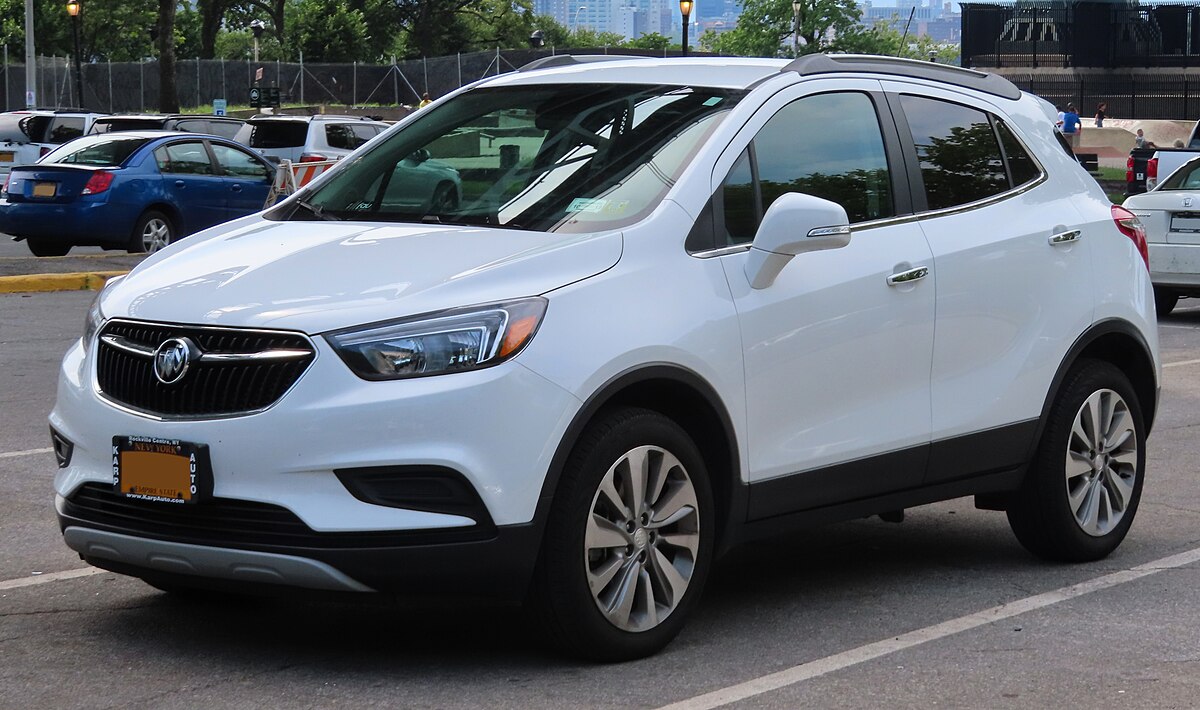
Among its highlights, the Encore delivers a smooth and composed ride, a stylish and well-designed interior, and a decent amount of space for both passengers and cargo.
On the flip side, its engine doesn’t offer much punch, and it comes with only one standard safety feature, which may be disappointing for safety-conscious buyers.
For 2022, the Encore saw a few changes. The lineup has been simplified down to a single trim level, and the infotainment screen is now smaller than before. However, Buick did increase the engine’s output by 17 horsepower, bringing a modest boost in performance.
The Encore seats five passengers and is available in both front-wheel drive and all-wheel drive configurations. It offers fuel economy ratings of 23–24 mpg in the city and 30–32 mpg on the highway, powered by a 155-horsepower engine.
Despite these updates, the 2022 Encore ranks #12 in the category of Affordable Subcompact SUVs, earning a 7.5 out of 10 overall score based on 56 pieces of research and data analysis from a variety of sources.
For example, the 2022 Hyundai Kona and 2022 Mazda CX-30 are tied for the top spot, with average prices paid ranging from roughly $17,600 to $26,000.
The Kia Soul, Kia Seltos, and Buick Encore GX all outrank the standard Encore, offering more compelling value and features at similar or slightly higher prices. It’s a decent choice for buyers who prioritize comfort and ease of use in a compact package.
The Encore’s smooth ride and tidy dimensions make it easy to maneuver, and its infotainment system is user-friendly. Still, its lackluster acceleration and limited tech features mean it doesn’t stand out in a crowded segment. Its projected five-year ownership costs are average for this class.
Those who like the Encore but need a bit more space should consider the Buick Encore GX, which provides more room and added features.
If you’re seeking a livelier driving experience, the Mazda CX-30 is worth a look. It offers sharper performance, more upscale interiors, and higher safety scores—making it a more engaging alternative to the Encore.
Crossovers That Disappoint
With their unibody construction, compact car-derived technology, and small engines, crossovers or compact SUVs have emerged as the most popular choice among today’s car buyers.
They deliver outstanding convenience, offering spacious cabins, generous cargo areas, and a forward-positioned interior layout.
Unlike traditional body-on-frame trucks, crossovers are significantly lighter, come equipped with advanced active safety systems, and present a fresh take on affordable yet practical personal transportation.
Their elevated stance, higher suspension, and, in some models, sophisticated all-wheel-drive systems, also contribute to a sense of adventure reimagined for everyday families and typical drivers.
Thanks to the seamless blend of off-road truck elements with unibody construction and modern design, compact SUVs and crossovers represent the most versatile “all-in-one” vehicles the auto industry has ever produced.
1. Mitsubishi Outlander
The Mitsubishi Outlander, though originally built on the GS platform co-developed by Daimler/Chrysler and Mitsubishi in the early 2000s, has evolved significantly in its latest version.
The modern Outlander crossover embraces advanced engineering by incorporating high-tensile steel in its structure and offering cutting-edge safety features such as Forward Collision Mitigation, Lane Departure Warning, and Adaptive Cruise Control.
Additionally, it includes a spacious seven-seat configuration. The most advanced model in the lineup is the Mitsubishi Outlander PHEV, which features a twin-electric 4WD system, a 2.0-liter gasoline engine, and a 12 kWh battery.
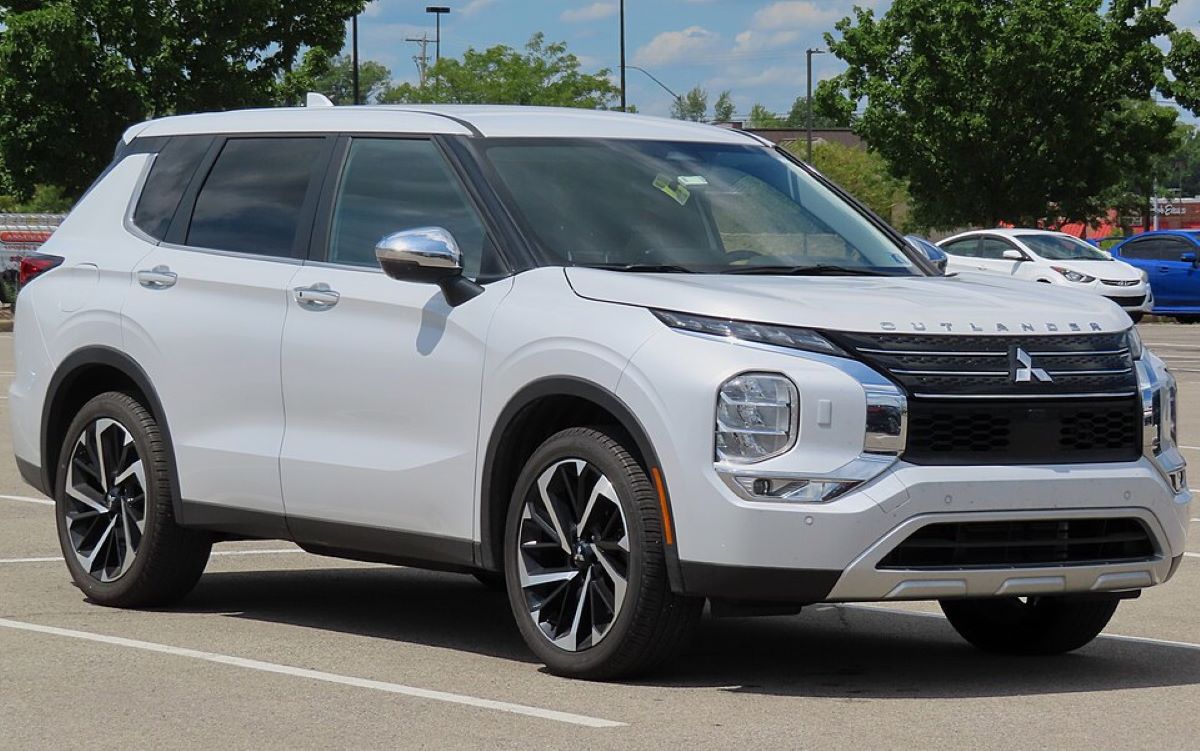
This plug-in hybrid system supports multiple driving modes: Full EV mode for electric-only driving, hybrid mode where the internal combustion engine charges the battery, and parallel hybrid mode where both the engine and electric motors power the wheels.
The Outlander PHEV delivers 74 MPGe, has 66.6 cubic feet of cargo space, can tow up to 1,500 pounds, and is also available with a 2.4-liter gasoline engine.
Performance specifications include a 0–60 mph time of 10.1 seconds, a top speed of 105.63 mph, and a combined power output from the gas engine and electric motors.
With a 13.8 kWh battery, the all-electric range is nearly 28 miles. Pricing for the Mitsubishi Outlander PHEV starts at $24,695.
2. Nissan Rogue
The Nissan Rogue, also known as the X-Trail in European markets, is a compact crossover that blends practicality with technology.
It is powered by a 2.5-liter four-cylinder engine producing 170 horsepower and is paired with a CVT transmission and available intelligent all-wheel drive.
Fuel economy is rated at 26 mpg in the city and 33 mpg on the highway. While the 2016 model year briefly offered a seven-seat configuration, current models have eliminated this option.

Nevertheless, the Rogue remains a highly functional vehicle with up to 70 cubic feet of cargo space. It is equipped with comprehensive safety features and the latest tech options, including Android Auto and Apple CarPlay.
Standout features include an available 360-degree surround-view camera, sliding second-row seats with a reclining backrest, and the optional ProPilot Assist system, which manages acceleration, braking, and steering during highway driving.
The Nissan Rogue offers a well-rounded experience for families and daily commuters alike, with a starting price of $25,020.
3. Mitsubishi Eclipse Cross
The Mitsubishi Eclipse Cross, despite borrowing its name from Mitsubishi’s iconic sports car of yesteryears, is actually a compact SUV.
Built on the same GS platform that underpins the Outlander, the Eclipse Cross combines sporty styling cues with the functionality of a modern crossover.
Its design leans toward the dynamic, but under the hood, it features a relatively modest 1.5-liter turbocharged gasoline engine that produces 152 horsepower and 184 pound-feet of torque.
While it may not provide as much cargo room as some of its rivals offering 48.9 cubic feet the Eclipse Cross compensates with a solid list of features and safety credentials, even though the base version lacks some of the more advanced active safety technologies.

Performance-wise, the Eclipse Cross is capable of accelerating from 0 to 60 mph in 8.6 seconds and achieves a combined fuel economy of up to 25 mpg.
In Europe, the vehicle is also offered with a 2.2-liter diesel engine that generates 184 horsepower, and many reviewers suggest it feels like a more balanced choice for the vehicle.
The crossover reaches a top speed of 124 mph and is competitively priced starting at $23,595. The Eclipse Cross strikes a balance between sporty aesthetics and everyday utility, making it a versatile option in the compact crossover category.
The Eclipse Cross has been designed to deliver a dynamic and refined driving experience. Its direct-injection turbocharged engine delivers strong, responsive performance, while Mitsubishi’s long-standing heritage in off-road and rally racing contributes to its agile handling and comprehensive safety features.
Step inside, and you’ll find a cabin that’s not only stylish but also loaded with cutting-edge technology, thoughtfully crafted around the driver while keeping passengers entertained and connected.
Equipped with Mitsubishi’s advanced Super All Wheel Control (S-AWC) 4WD system, the Eclipse Cross offers exceptional stability across various driving conditions.
This full-time four-wheel-drive setup improves drive power distribution, enhances cornering ability, and boosts overall control no matter the weather.
The system integrates Active Yaw Control, Active Stability Control, and Anti-lock Braking System (ABS), all of which are particularly helpful for navigating slippery surfaces, making hill starts easier and turns more secure.
Adding to the high-tech feel of the cabin is a futuristic Heads-Up Display (HUD) that projects key information like your speed and the distance to the vehicle ahead directly into your line of sight. It enhances safety by allowing you to keep your eyes on the road, and it’s sure to impress with its sleek, pop-up motion from the dashboard.
Centrally placed between the speedometer and tachometer is a full-colour LCD Multi-Information Display that presents a wealth of useful data—from your current fuel range to real-time MPG.
4. Jeep Compass
The Jeep Compass is a compact crossover positioned between the Renegade and Cherokee in the Jeep lineup. Built on a modified version of the Renegade’s platform, it offers a sense of adventure that’s characteristic of the Jeep brand.
The Compass’ closest rival might be the Mitsubishi Eclipse Cross, but the Jeep differentiates itself by offering a more robust off-road capability.
All trim levels of the Compass (Sport, Latitude, and Limited) offer the option of all-wheel drive (AWD), with the Trailhawk trim having it as standard.
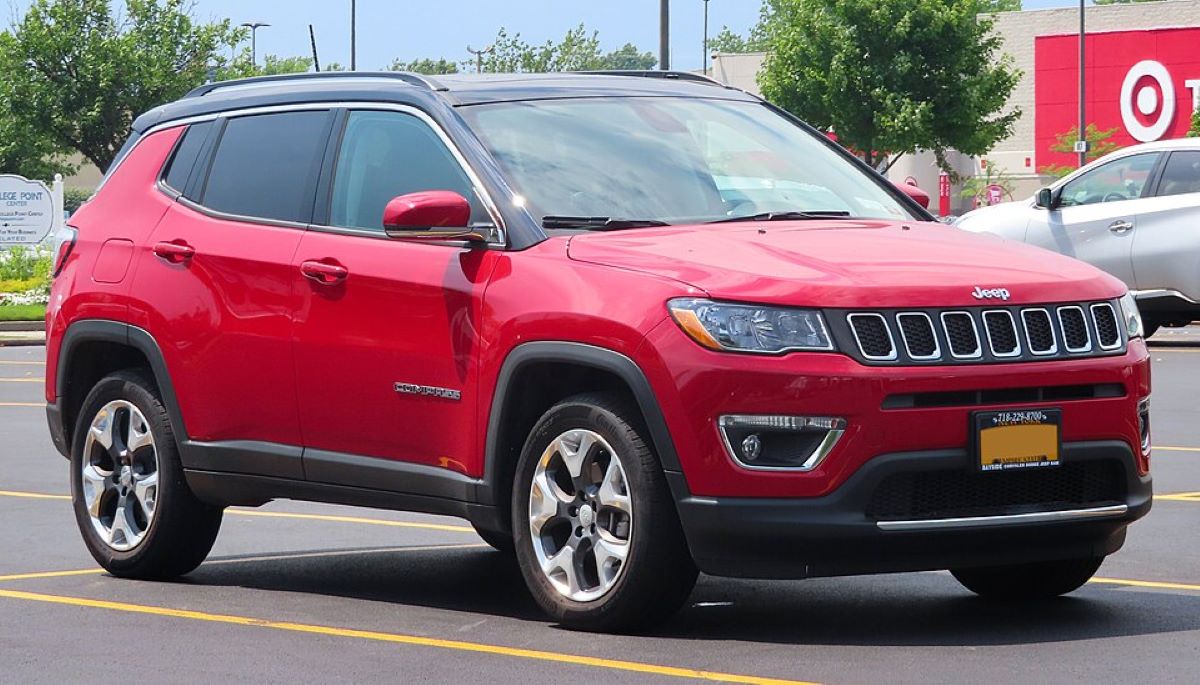
One of the standout features of the Compass is its class-leading AWD system, which can direct up to 100 percent of power to a single wheel, enhancing traction and control.
There are five engine options available for the Compass, but in the U.S. market, the only available engine is the 2.4-liter Tigershark, which produces 180 horsepower and 175 pound-feet of torque.
This engine is paired with a six-speed manual, six-speed automatic, or a nine-speed automatic transmission. The Jeep Compass offers up to 30 mpg in fuel economy and can tow up to 2,000 pounds, making it a capable and efficient crossover.
With nearly 63 cubic feet of cargo space with the rear seats folded down, the Compass is both practical and versatile. The Jeep Compass starts at a price of $22,095.
5. Ford Escape
The 2020 Ford Escape is one of the latest additions to the compact crossover market and is designed to prioritize efficiency and performance.
It offers multiple powertrain options, including a 1.5-liter turbocharged engine generating 180 horsepower, a 2.0-liter turbocharged engine with 250 horsepower, and hybrid and plug-in hybrid versions.
Ford has focused on reducing weight in the new Escape, making it 200 pounds lighter than its predecessor, thanks to the use of high-strength steel.
Additionally, it has been made more aerodynamic, contributing to better fuel efficiency. The standard hybrid model is equipped with a 1.1 kWh battery, while the plug-in hybrid uses a larger 14.4 kWh battery pack, providing an all-electric range of up to 30 miles.
The Escape also offers impressive towing capacity, with even the least powerful version able to tow up to 2,000 pounds.
Inside, the Escape comes with a host of advanced safety features and tech, including options for HD Radio and a premium Bang&Olufsen audio system. The Ford Escape is a well-rounded crossover that starts at $24,105.
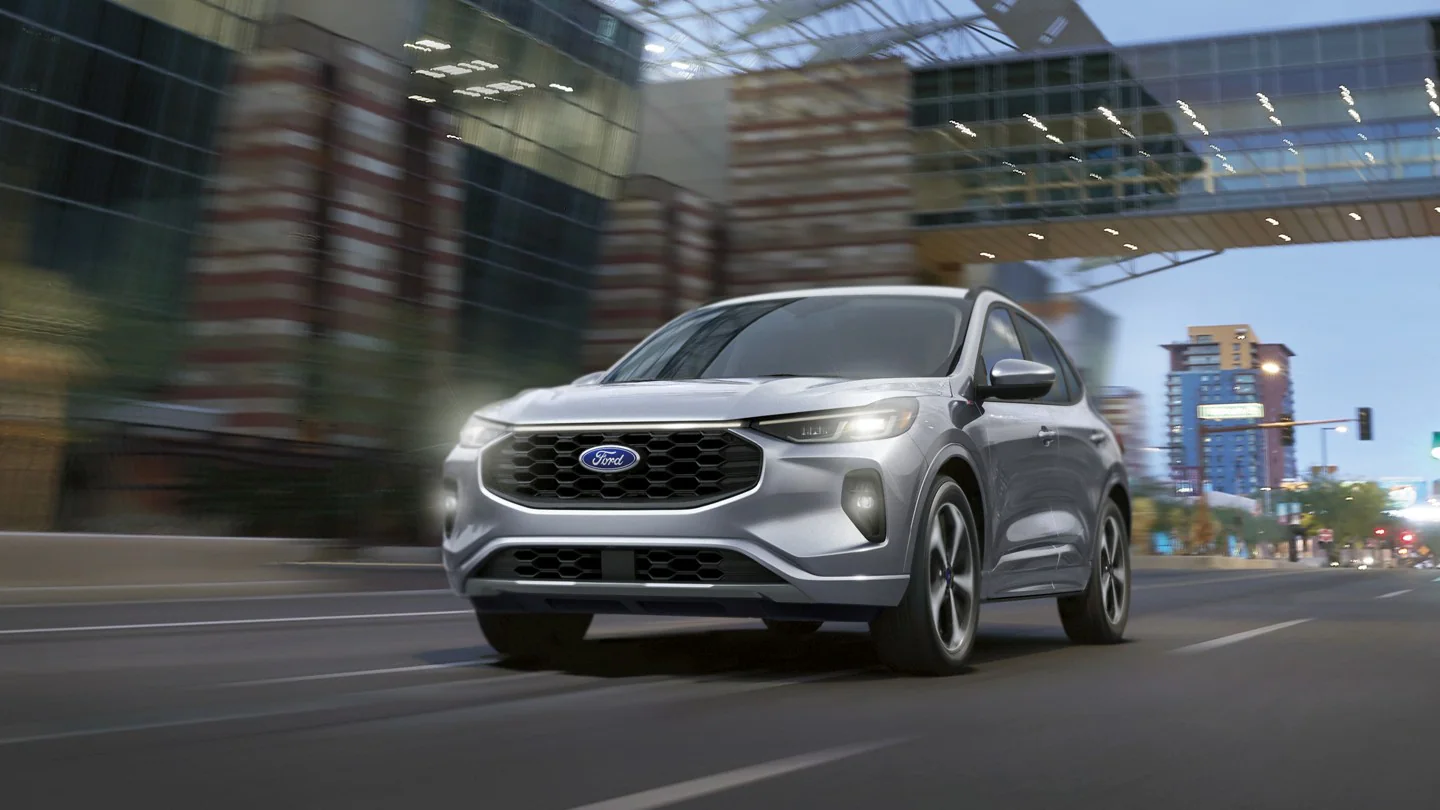
With the Bronco Sport handling the more rugged off-road responsibilities, the 2025 Ford Escape SUV is positioned to focus on the everyday driving duties that most compact SUV owners typically face.
In that regard, it delivers with a selection of fuel-efficient engines, a spacious cabin, and user-friendly infotainment systems—covering the essentials effectively.
However, when it comes to finer details, the Escape falls short of leading rivals in this crowded and highly competitive segment. The base three-cylinder engine gets the job done but feels unrefined and could benefit from some polishing.
Lower trims also suffer from subpar interior materials that come off as cheap. Driving the Escape isn’t particularly thrilling either, which might be acceptable for many buyers, but it’s a letdown for those who want more engagement.
Additionally, its suspension tuning is overly firm, which seems at odds with its goal of delivering a smooth, family-friendly ride. In contrast, segment standouts like the Honda CR-V and Mazda’s CX-5 and CX-50 offer more rewarding driving dynamics and interiors that feel notably more upscale.

